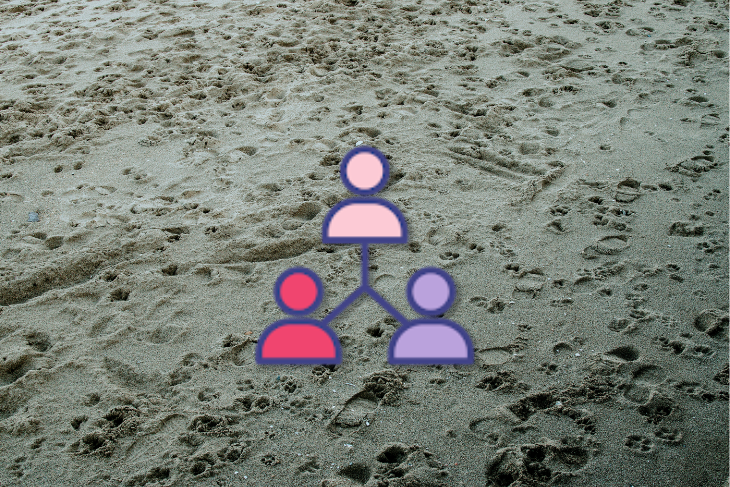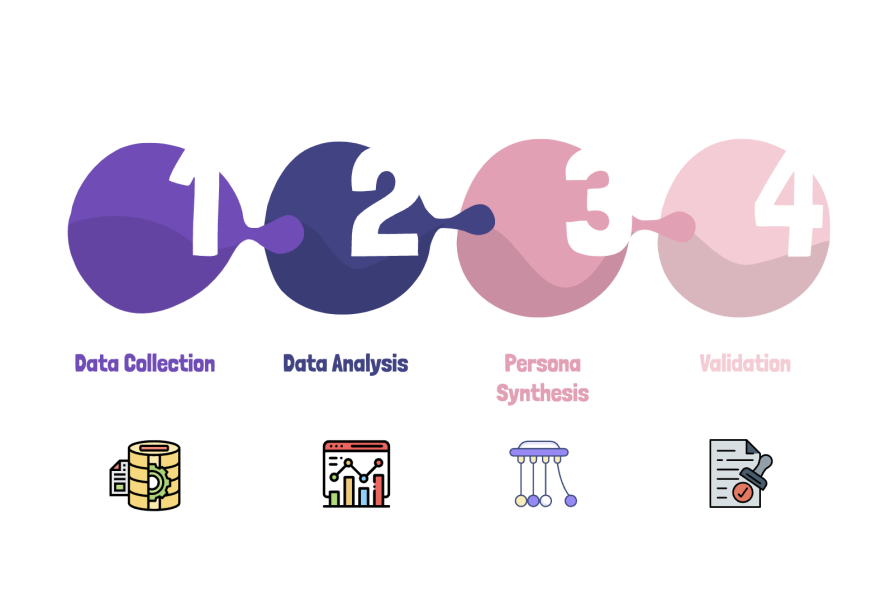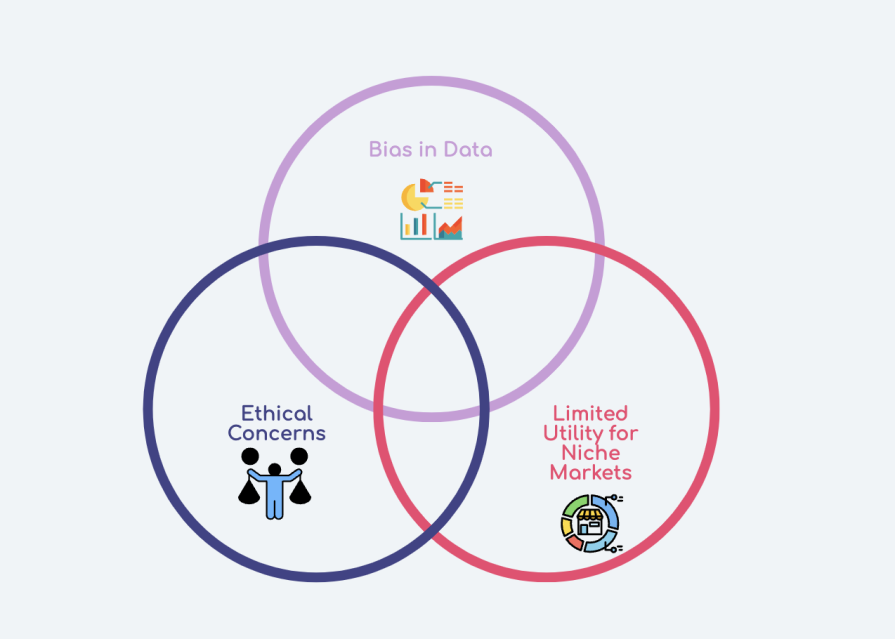Understanding your users is essential to designing products that resonate with their needs, solve their pain points, and inspire loyalty. The cornerstone of this understanding has traditionally been user personas, which are fictional characters that represent the key traits of a target audience.

However, creating personas the traditional way can be tedious, subjective, and often limited in scope. It can require you to rely on small datasets, anecdotal evidence, or team assumptions.
AI-generated personas not only save time but also provide a more accurate, scalable, and dynamic representation of your users. This article dives into how to create a group of AI personas, the tools and techniques available, and best practices for integrating them into your product design and development strategies.
The benefits of AI-generated personas
AI-generated personas offer significant advantages over traditional methods. These include speed, precision, and adaptability, making them invaluable for teams working in fast-paced, data-driven environments. AI-generated personas also allows for:
Efficiency in processing data at scale
Traditional persona creation often involves qualitative methods such as interviews, surveys, and observations. While insightful, these approaches are time-intensive and typically focus on small datasets.
AI flips the script by rapidly analyzing vast amounts of data from multiple sources, including customer relationship management (CRM) platforms, website analytics, and even social media activity. This enables teams to create personas based on large, representative datasets in a fraction of the time.
Improved accuracy and objectivity
One of the biggest challenges with traditional personas is their reliance on subjective interpretation. AI, on the other hand, uses data-driven methods to identify patterns and trends. By applying techniques like clustering algorithms and natural language processing (NLP), AI ensures personas are grounded in real behaviors and preferences, not just assumptions or isolated anecdotes.
Scalability for diverse projects
Whether your product serves a niche audience or spans global markets, AI-generated personas can scale to meet your needs. AI enables the creation of multiple personas tailored to various user segments without the need for additional manual effort. For instance, a global product might require personas that account for cultural nuances, language preferences, and localized behaviors, all of which AI can help uncover.
Dynamic and evolving personas
AI personas aren’t static documents. As new data becomes available, these personas can be updated and refined, ensuring they remain relevant as user preferences, behaviors, and market dynamics change.
Steps to create AI-generated personas
The process of creating AI personas involves a blend of data gathering, analysis, and synthesis, enhanced by AI’s ability to identify patterns and generate insights at scale:

1. Data collection
A persona is only as good as the data behind it. To create robust AI personas, start by gathering data from multiple sources:
- Quantitative data — Website analytics, CRM tools, transactional data, and heatmaps
- Qualitative data — User interviews, surveys, support tickets, and social media posts
- Third-Party data — Market research reports, competitive analysis, and publicly available demographic information
The more comprehensive and diverse your dataset, the better your personas will reflect the real-world diversity of your users.
2. Data analysis
Once your data is collected, use AI to process and analyze it. AI techniques such as clustering, predictive modeling, and natural language processing can uncover user segments and identify patterns in behaviors, motivations, and preferences.
For example:
- Clustering algorithms — Group users based on shared characteristics, such as purchasing behavior or app usage patterns
- Natural language processing (NLP) — Analyze textual data, such as customer reviews, to extract common themes and sentiment
- Predictive analytics — Forecast future behaviors or needs based on historical trends
These methods help segment your audience into meaningful groups, laying the foundation for persona creation.
3. Persona synthesis
With user segments defined, it’s time to translate these insights into actionable personas. AI tools can assist in creating detailed profiles, starting with broad attributes and refining them iteratively.
Key components of a persona include:
- Demographics — Age, gender, location, occupation, and education level
- Behaviors — Preferred platforms, purchasing habits, content consumption patterns, and device usage
- Motivations and goals — What drives them? What problems are they trying to solve?
- Pain points — What barriers or frustrations do they encounter that your product can address?
For instance, prompting an AI tool like Google Gemini to generate a persona might look like: “Create a persona for a 35-year-old working professional who uses fitness apps regularly but struggles with motivation to maintain consistency.”
4. Validation
No matter how sophisticated the AI, validating your personas against real-world data is crucial. This involves:
- Cross-checking — Compare AI-generated personas with insights from interviews or usability testing
- Team feedback — Share personas with stakeholders to ensure they align with the team’s understanding of the target audience
- Iteration — Refine personas based on feedback and additional data
Validation ensures your personas are not only accurate but also actionable for your design and strategy teams.
Tools for AI persona creation
To get started with AI-driven persona creation, try using these tools:
UserForge
UserForge combines AI-driven insights with collaborative features, allowing you to co-create and refine personas. This makes it particularly useful for projects involving cross-functional collaboration.
Google Gemini
General AI tools like Google Gemini (Bard) are versatile and budget-friendly. While not persona-specific, they can generate and iterate on personas with thoughtful prompts, making them a flexible option for teams without access to dedicated persona tools.
Best practices for integrating AI personas into product strategies
To successfully integrate AI personas, keep the following best practices in mind.
1. Combine AI with qualitative insights
While AI-generated personas provide quantitative depth, pairing them with qualitative research enriches their narratives. For example, user interviews can reveal emotional drivers that don’t surface in analytics data.
2. Maintain ethical data practices
Data privacy and ethics are non-negotiable. Ensure compliance with regulations like GDPR or CCPA, and use anonymized datasets to protect user privacy.
3. Regularly update personas
User behaviors evolve over time. AI makes it easy to refresh personas with new data, ensuring they stay relevant to current market conditions.
4. Use personas across teams
AI personas are a strategic asset, not just a design tool. Use them to:
- Map user journeys
- Align marketing and product strategies
- Develop scenario-based testing for usability improvements
Limitations of AI-generated personas
Despite their advantages, AI-generated personas come with challenges:

- Bias in data — AI models are biased towards their training data. To avoid misrepresentation, ensure your dataset is diverse and representative of your target audience
- Ethical concerns — Transparency in how user data is collected and used is critical. Unethical practices can erode trust and lead to legal consequences
- Limited utility for niche markets — AI struggles when data is scarce or when targeting highly specific user groups. Supplement AI personas with qualitative methods in these cases
Conclusion
AI-generated personas represent a paradigm shift in user-centered design. By automating the analysis of large datasets, they enable you to create personas that are precise, scalable, and dynamically updated.
However, success depends on combining AI’s capabilities with human judgment, ethical considerations, and continuous validation.
By adopting AI for persona creation, you can streamline workflows, align cross-functional teams, and design products that genuinely meet user needs. Start exploring AI tools today and take your product design process to the next level.
Featured image source: IconScout
The post How to create AI-generated personas for enhanced product design appeared first on LogRocket Blog.